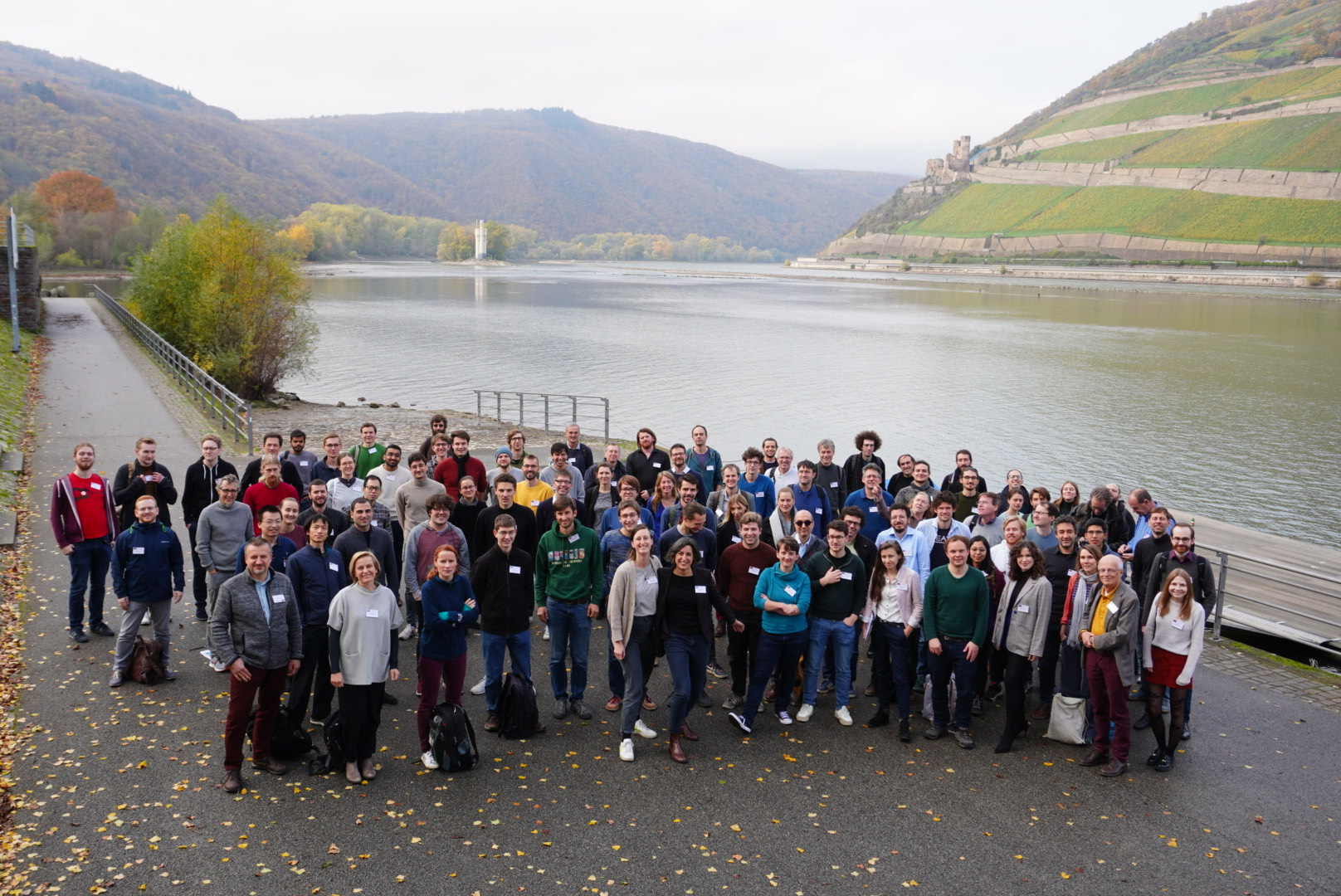International Conference on Quantum Systems in Extreme Conditions (QSEC2022)
NH Hotel Bingen
Conference photo

Overview
The understanding of quantum systems in extreme conditions requires the resolution of outstanding questions, relevant for a wide range of topical applications from particle and nuclear physics to atomic and condensed matter physics. Many such systems exhibit characteristic common properties despite dramatic differences in key parameters such as temperature, density, field strength and others. The existence of universal regimes, where even quantitative agreements between seemingly disparate physical systems can be observed, drives a remarkable convergence of research activities across traditional lines of specialisation. In turn, the identification and investigation of non-universal properties plays a vital role for an improved under-
standing of fundamental differences between the systems.
The International Conference on Quantum Systems in Extreme Conditions (QSEC2022) brings together experimental and theoretical researchers working on topics that are particularly driven by such cross-disciplinary developments, in particular:
- Far from equilibrium dynamics and thermalisation
- Quantum systems with strong fields
- Phase structure, large fluctuations and quantum critical phenomena
Keynote talks will provide overviews about quantum systems in extreme conditions in heavy ion collisions, precision spectroscopy in highly charged ions, and ultracold quantum gases. Contributed talks are dedicated to recent progress in these systems. Abundant discussion time and two poster sessions are foreseen for the vital interactions between experimental and theoretical physicists working in the different areas.
Keynote Speakers
Laura Fabbietti (Germany)
Thierry Giamarchi (Switzerland)
Gianluca Gregori (United Kingdom)
Rudi Grimm (Austria)
Marianna Safronova (USA)
Dam Thanh Son (USA)
Invited speakers
Jasmine Brewer (Switzerland)
Raphaelle Bailhache (Germany)
David Clément (France)
Alina Czajka (Poland)
Elina Fuchs (Germany)
Felix Karbstein (Germany)
Esther Menz (Germany)
Julian Schmitt (Germany)
Tapio Simula (Australia)
Federica Surace (USA)
Quantum Systems in Extreme Conditions is organized by the DFG funded Collaborative Research Center 1225 ISOQUANT.
Adrian Braemer
Aleksas Mazeliauskas
Alexander Schmutz
Alexandra Eckey
Alina Czajka
Andrea Dubla
Andrea Palermo
Andreas Kirchner
Antonino Di Piazza
Bastian Sikora
Christian Kohlfürst
Dam Son
David CLEMENT
David Feiz
Eduard Thommes
Eleonora Lippi
Elina Fuchs
Elinor Kath
Erekle Arshilava
Esther Babette Menz
Fabian Zhou
Federica Capellino
Federica Maria Surace
Felix Karbstein
Gabriella Kälin
Gerhard Zuern
Giacomo Morpurgo
Gianluca Gregori
Giuliano Giacalone
Guillaume Taillepied
Helmut Strobel
Ido Siovitz
Ilya Selyuzhenkov
Jan Kilinc
Jan M. Pawlowski
Jasmine Brewer
Johanna Stachel
Jonas Wessely
Julian Schmitt
Jörg Schmiedmayer
Jürgen Berges
Karthik Chandrashekara
Kathrin Kromer
Keerthan Subramanian
Keisuke Fujii
Kilian Welz
Kirill Boguslavski
Klaus Blaum
Klaus Reygers
Lars Heyen
Lars Reichwein
Laura Batini
Laura Fabbietti
Lauriane Chomaz
Lijana Diestel
Lillian de Bruin
Lilo Höcker
Lisa Ringena
Luuk Vermunt
Manfred Salmhofer
Marc Bauer
Marianna Safronova
Marius Sparn
Markus Oberthaler
Markus Schröfl
Martin Gärttner
Matthias Diez
Matthias Weidemüller
Maurits W. Haverkort
Menno Door
Michael Heinrich
Michael Rautenberg
Michael Rudolf Ciupek
Moritz Drescher
Moritz Hornung
Moritz Reh
Natalia S. Oreshkina
Nicolò Antolini
Niklas Rasch
Nikolas Liebster
Paul Hill
Peter Braun-Munzinger
Philipp Heinen
Qi Liang
Raphaelle Bailhache
Richard Schmidt
Rudolf Grimm
RUGWAY WU
Sandra Brandstetter
Sebastian Erne
Sebastián Franchino-Viñas
Shuwei Jin
Silvia Masciocchi
Sreya Banerjee
Stefan Floerchinger
Stefan Lannig
Sven Sturm
Tapio Simula
Thierry Giamarchi
Thimo Preis
Thomas Gasenzer
Tilman Enss
Tina Kuka
Tobias Podszus
Tomas Jezo
Uwe Hernandez Acosta
Valentina Salazar Silva
Viktoria Noel
Yanliang Guo
Yannick Deller
Zoltan Harman

